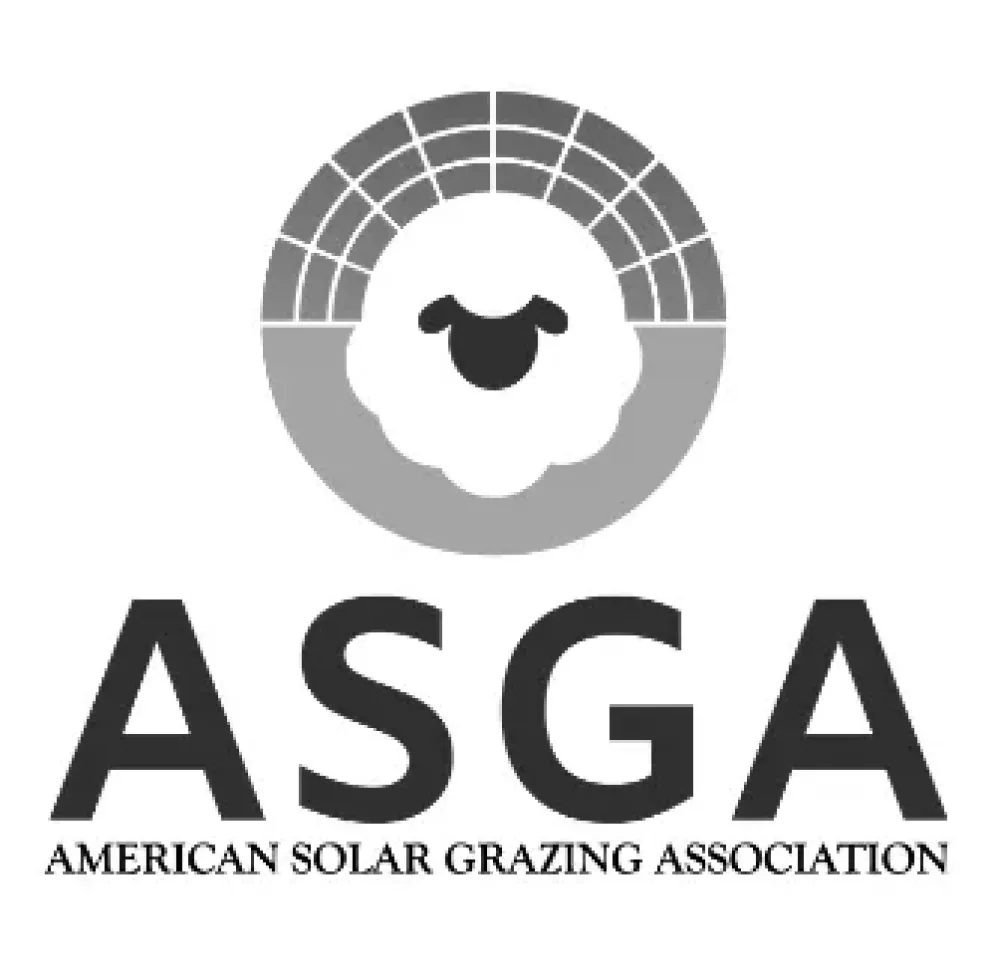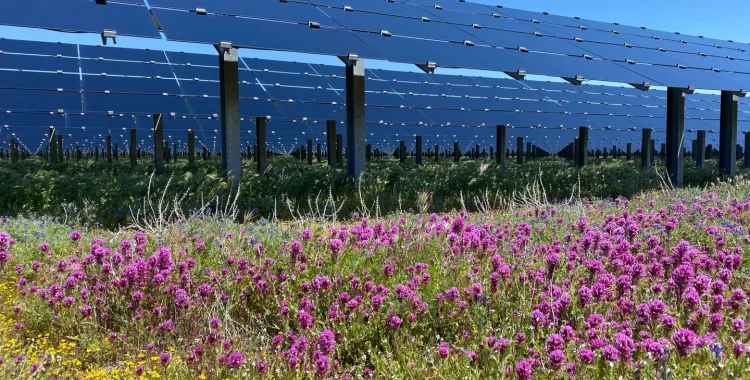Creating opportunities for you and your family
Generate additional income without sacrificing the use of your land
At AES, we know your land is more than just a farm — it's your legacy. That’s why we are leading the way in agrivoltaics, a solution that allows you to continue farming while generating solar energy.
Agrivoltaics combines agriculture, such as crop cultivation or livestock grazing, with solar power generation on the same plot of land. It offers the opportunity to harvest the sun twice, benefiting farmers and rural communities while meeting energy needs. By doing this, farms can continue to operate for generations to come.
As a pioneer in agrivoltaics, AES is trusted to manage thousands of acres of solar grazing, contribute to groundbreaking research and implement the latest technologies. We work closely with landowners to tailor approaches that fit the unique needs of their land, ensuring a sustainable and long-lasting partnership.

Innovation in agrivoltaics
At AES, we understand the importance of protecting farmland and preserving the local environment. When developing renewable energy projects, we prioritize adding value, rather than taking away from what already exists.
Our clean energy projects are non-permanent developments that preserve the land, while providing your family with alternative sources of income that allow you to continue farming and ranching
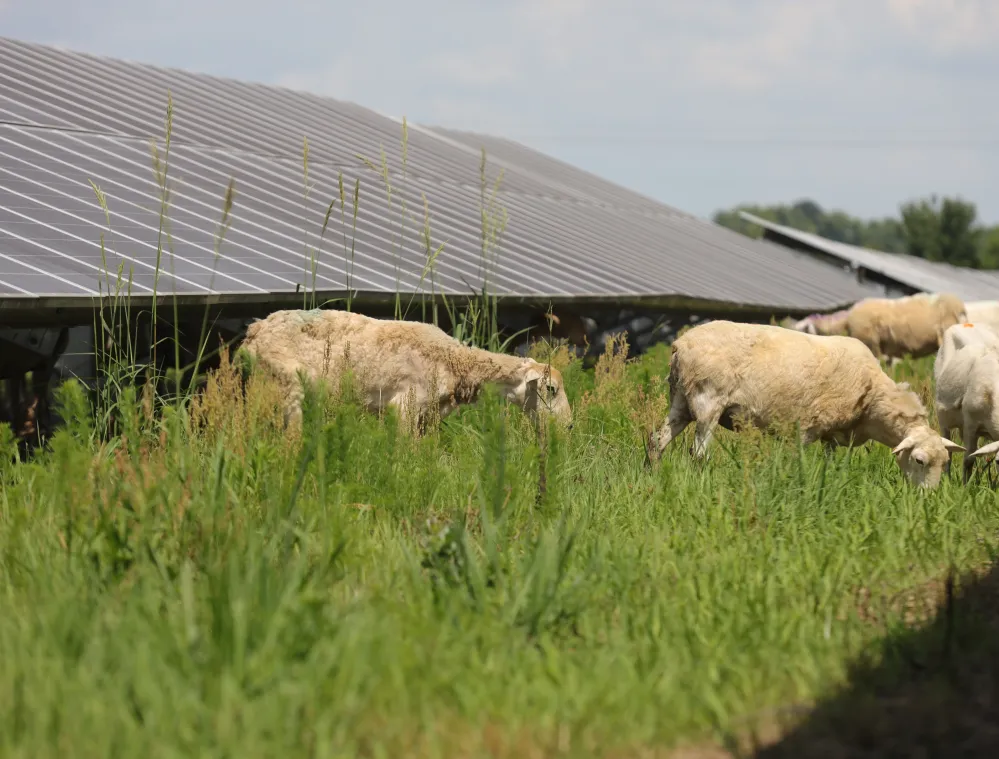
Solar grazing
Sheep and solar panels can be excellent cohabitators. Instead of seasonal mowing to prevent vegetation from shading solar panels, grazing offers a natural alternative. Farmers can maintain their land while optimizing its productivity, with livestock helping to manage vegetation. AES has more than 10,000 acres under active grazing at over 50 solar farms across the US.
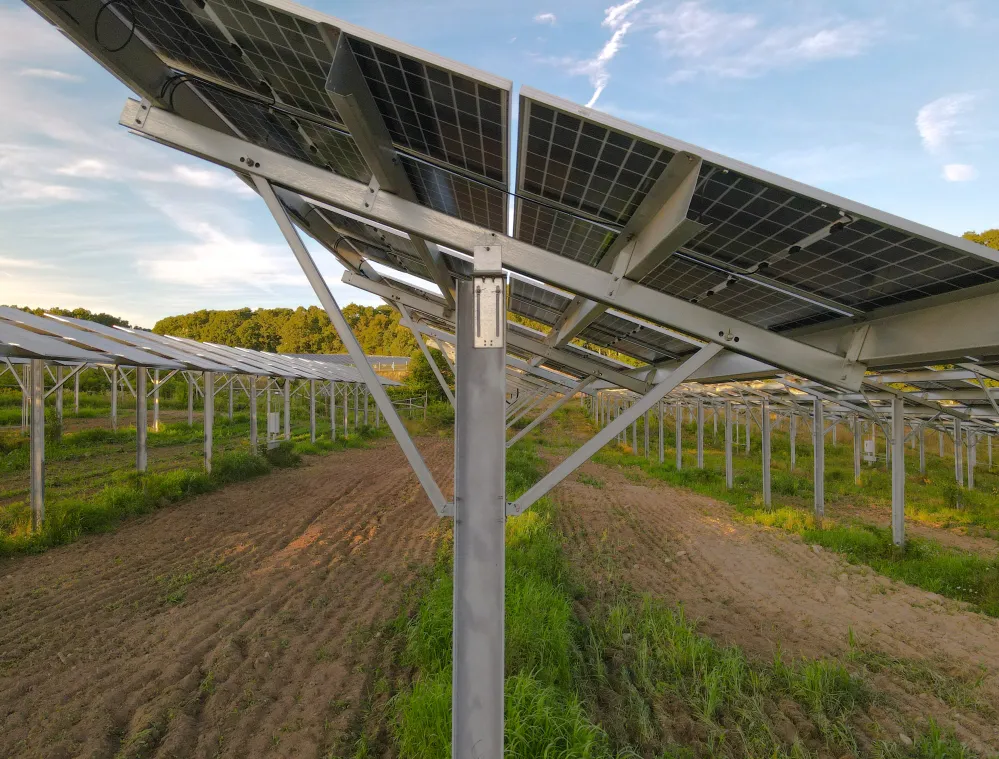
Crop spacing
We are exploring early applications of integrating crops alongside solar installations. This innovative approach allows climate-smart perennial crops to grow between rows of operating solar panels, often reducing water usage and improving soil health from the shade the solar panels provide.
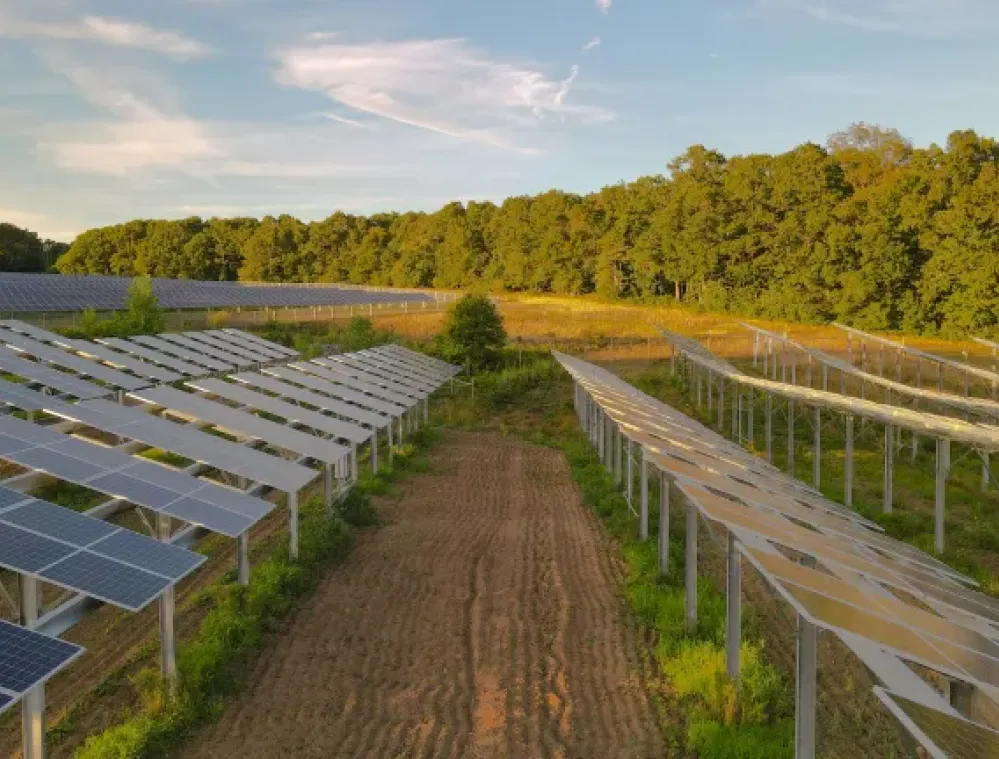
Restoration and removal
Our solar installations are designed to be low-impact — with minimal to no grading, no concrete foundations, and with erosion and sediment control measures. We conduct comprehensive environmental studies to ensure that a project is thoughtfully and responsibly designed to limit disruption to the surrounding environment. At the end of a project’s operating life, a decommissioning plan ensures the site can be sensitively restored to allow a return to use consistent with land use policies at the time.
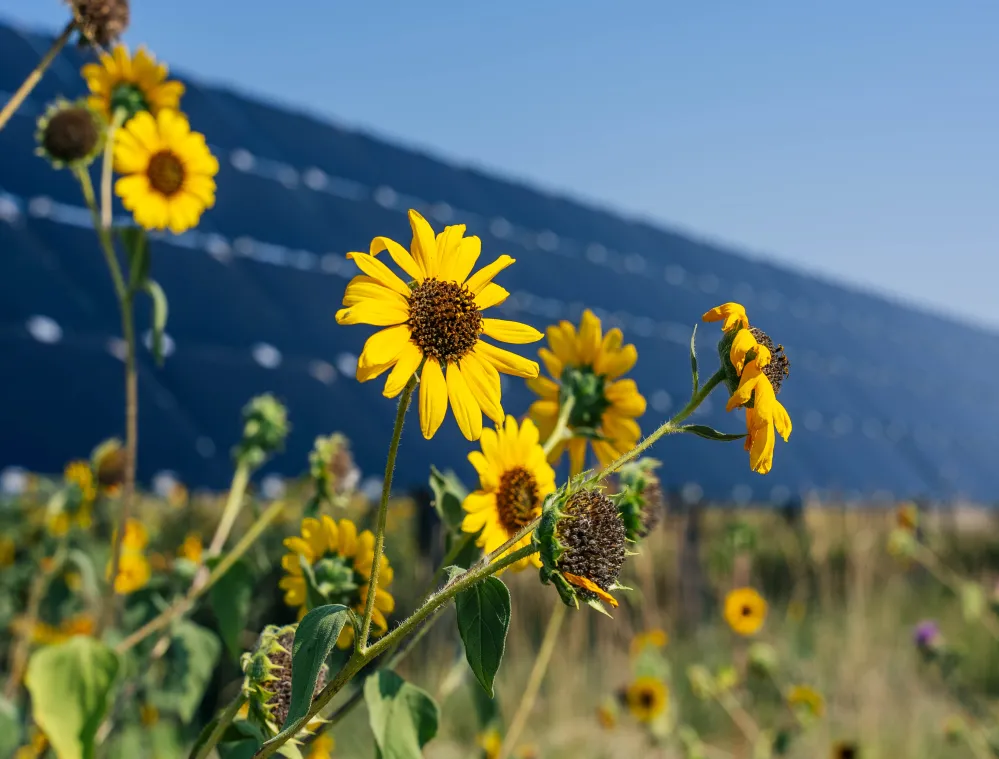
Sustainable ecosystem design
We take a holistic approach to ensure our solar projects become an integral part of the natural ecosystem. From choosing ground cover that promotes pollinator habitats and restores soil health, to working with local cooperatives and beekeepers, we collaborate closely with landowners to design sites that support sustainable, thriving ecosystems.
The future of solar, the future of farming
AES’ four step approach to seamlessly integrate solar and agriculture
Phase 1
Every project begins the same way: by working with you to understand what agricultural practices you’d be interested in seeing at the site. This initial step is critical in developing an understanding about both what you want and what is possible while we work to make it a reality.
Phase 2
Once we have your specific goals established, we begin to study the land to better understand any and all possible environmental impacts. This process includes working with government agencies and experienced agricultural partners to identify possible land constraints and determine how your desires can benefit the land alongside renewable generation.
Phase 3
Equipped with an understanding of any land constraints, our engineers design a tailored plan that can help meet your goals. We then facilitate coordination with the local community and government agencies to secure the necessary approvals and permits for the project.
Phase 4
Following project approval, we leverage over 40 years of experience in building award-winning projects to turn your vision into reality. Our expertise ensures that every aspect of the project is executed efficiently and effectively.
Phase 1
Every project begins the same way: by working with you to understand what agricultural practices you’d be interested in seeing at the site. This initial step is critical in developing an understanding about both what you want and what is possible while we work to make it a reality.
Phase 2
Once we have your specific goals established, we begin to study the land to better understand any and all possible environmental impacts. This process includes working with government agencies and experienced agricultural partners to identify possible land constraints and determine how your desires can benefit the land alongside renewable generation.
Phase 3
Equipped with an understanding of any land constraints, our engineers design a tailored plan that can help meet your goals. We then facilitate coordination with the local community and government agencies to secure the necessary approvals and permits for the project.
Phase 4
Following project approval, we leverage over 40 years of experience in building award-winning projects to turn your vision into reality. Our expertise ensures that every aspect of the project is executed efficiently and effectively.
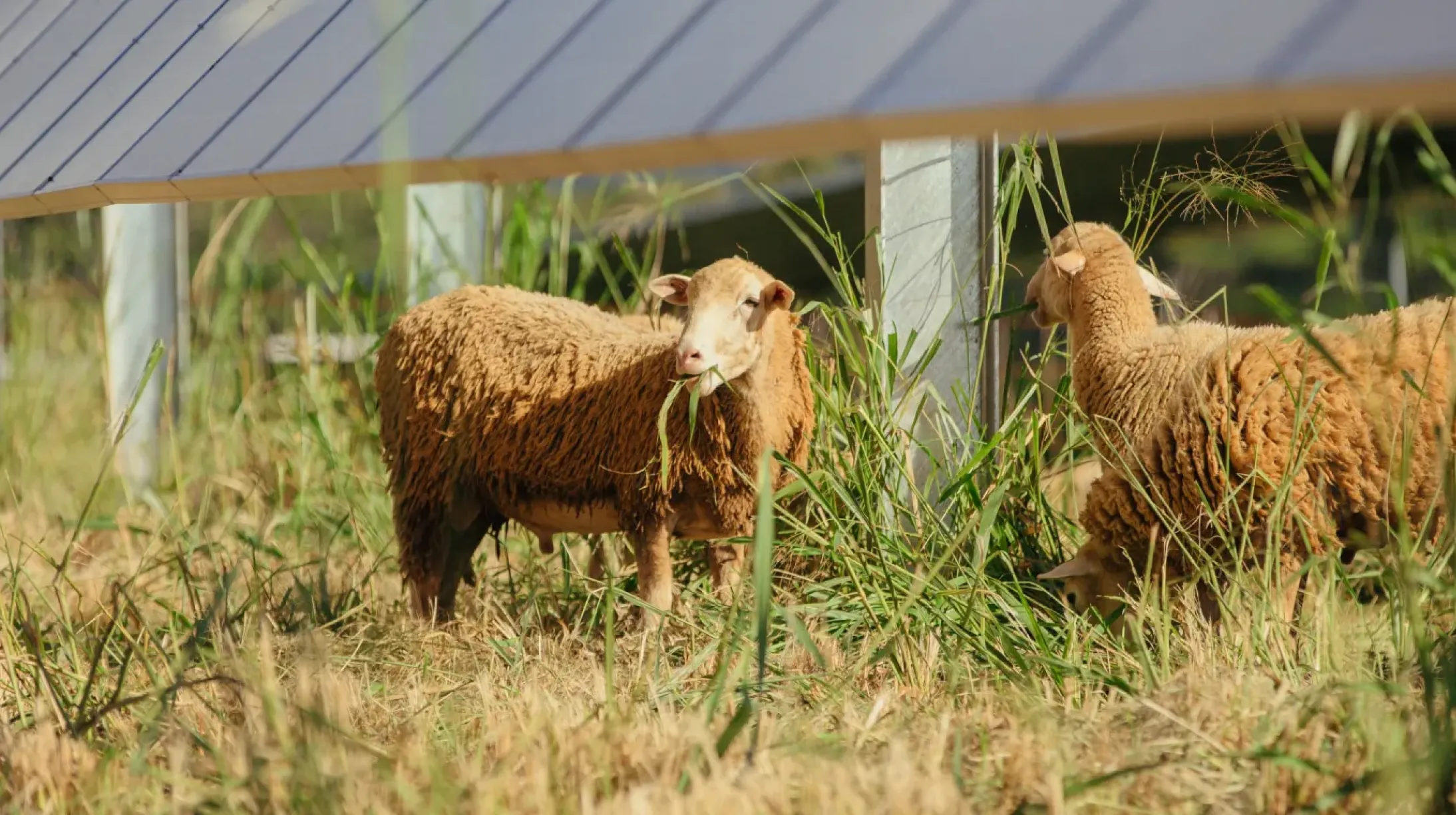
Established success in agrivoltaics: partnering for sustainable solutions
As agrivoltaics continues to evolve, partnering with a company that has a proven track record of success is essential. Our commitment to excellence is demonstrated by our multiple Edison Awards for innovation and our active collaborations at the forefront of agrivoltaics research.
Through research partnerships with University of Pennsylvania, University of Massachusetts, University of Arizona and the Hawaii Agriculture Research Center, and collaborations with the National Renewable Energy Lab and the U.S. Department of Energy, we are accelerating the impact of our solar projects and driving the future of sustainable agriculture.




AES has a partnership with the American Solar Grazing Association and past partnership with the American Farmland Trust to develop the most sustainable land development and restoration practices.
By doing so, AES is actively engaged in the effort to strengthen farm viability and keep farmers on their land for decades to come.
